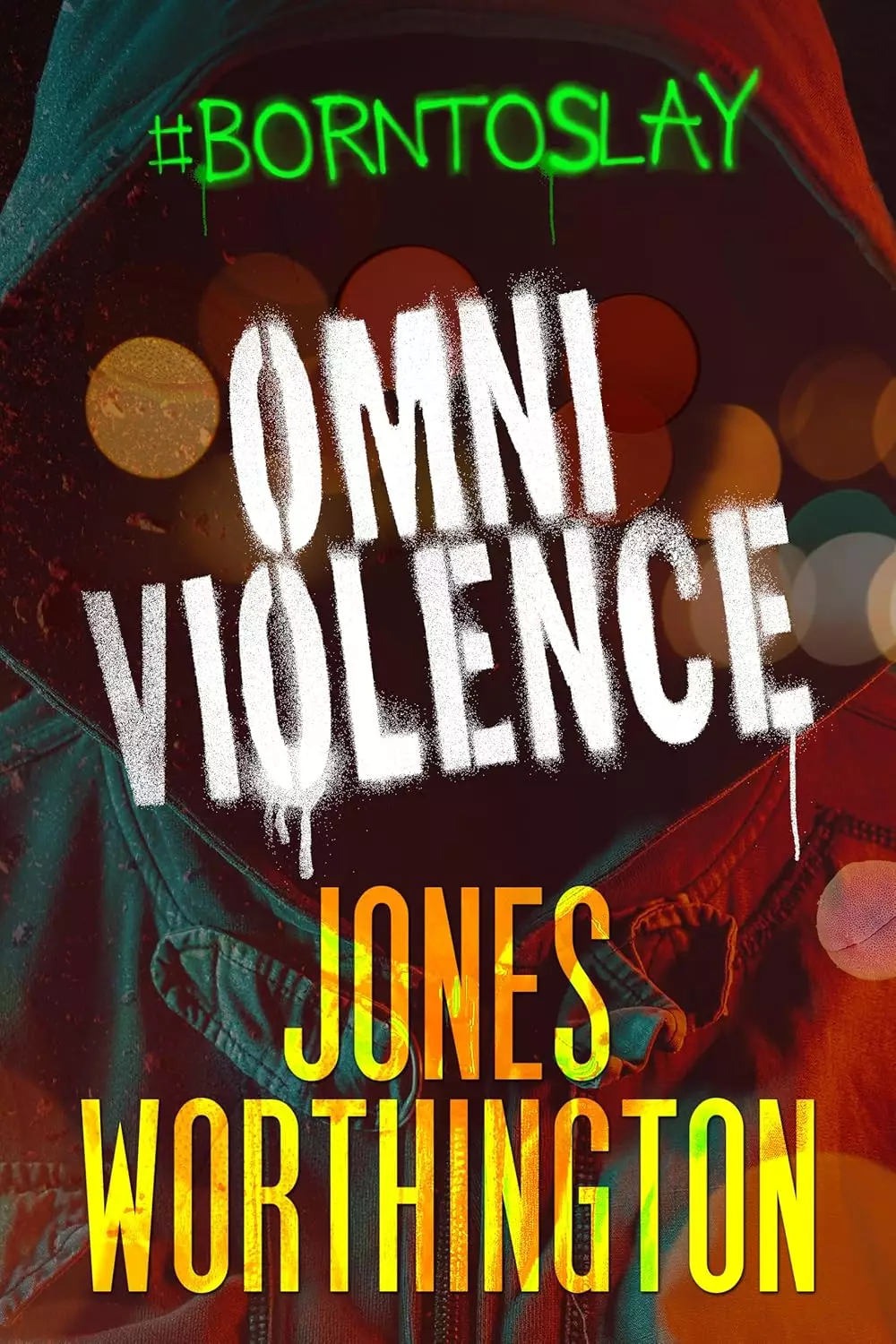“Omniviolence,” the latest collaboration by the dynamic writing duo Gareth Worthington and Stu Jones, grips the reader with a raw, unsettling vision of a near-future society spiraling into chaos. This unflinching narrative presents a world where the threads of government and law enforcement have entirely unraveled, replaced by an unregulated internet and the pervasive influence of cryptocurrency. The description of a society stripped of its moral compass is not simply background scenery; it is a fundamental character in this gripping tale. Worthington and Jones invite readers on a harrowing journey, forcing us to view our own civilization through a dark lens.
The story dives deep into the implications of technology when its use is detached from ethical considerations. The protagonists, teen drone killer Jackson and the old-world mob enforcer Bones, primarily function in a world devoid of traditional structures—a commentary on how technological advancements can augment our most primal instincts. The contrasts between these characters are stark but fuel a compelling narrative, ultimately illustrating the dissonance between generations and the consequences of relying on technology to facilitate acts of violence.
Characters with Depth and Complexity
Jackson’s character development is particularly noteworthy. Though he engages in despicable acts—eliminating targets from a distance, devoid of personal connection—the duality within him reflects a larger societal conflict. Between the comfort of anonymity and the inescapable reality of his actions, Jackson becomes a representation of the moral labyrinth modern youth must navigate. His digital persona conflicts with the physical reality he occasionally faces, inviting readers to question how technology isolates yet connects us.
Bones, on the other hand, serves as a bridge between the old-school methods of “doing business” and this new world filled with digital mercenaries. His roots in a more tactile form of violence stand in stark contrast to the remote disconnect Jackson thrives upon. As they join forces, their character arcs intertwine and spiral towards an inevitable confrontation, exposing the frailty of alliances in a lawless environment. The evolution of their relationship is a high point in the narrative, revealing the authors’ skill in crafting multi-dimensional characters who resonate with readers.
A World Fallible to Darker Impulses
What makes “Omniviolence” truly remarkable is its ability to tackle disturbing subject matter while encouraging introspection. Violence, as depicted in this futuristic setting, raises profound questions regarding human nature and technology’s role in not only facilitating but encouraging brutality. The novel’s relentless pace and action sequences are exhilarating, but these elements serve a larger purpose beyond entertainment. The unnerving portrayal of freelance drone killers and the trafficking of revenge mimics troubling real-world trends in digital vigilantism and the desensitization to violence.
Despite the novel’s relentless energy, the execution of some villainous characters occasionally risks veering toward cliché. As the authors navigate through their motivations, certain narrative choices echo overly familiar tropes, positioning them dangerously close to comic-book villainy. While the plot unfurls with intricate twists and turns, these caricatures threaten to dilute the overall nuance of the meticulously crafted world. Furthermore, this sporadic lack of depth in antagonists may undermine the intelligently woven message about morality and depravity.
An Unapologetic Exploration
“Omniviolence” is undeniably a challenging read, laden with themes that could trigger or distress many. Yet, beneath the visceral violence lies a relentless critique of society’s trajectory— a reflection on the potential consequences of unchecked technology and humanity’s darker tendencies. The authors present a stark warning about the seductive allure of violence and the urgent need for ethical boundaries in a rapidly evolving world.
By weaving action-packed sequences with philosophical musings about morality, Worthington and Jones elevate their work beyond a mere sci-fi thriller. They effectively dismantle the facade of a semblance of order we cling to in modern society and invite readers to ponder about the precarious balance between our technological capabilities and our moral responsibilities. Through their storytelling, they manage to create a narrative that is both chilling and fascinating, ensuring that readers emerge from their journey with a heightened awareness of the darker undercurrents that define both the future of humanity and our current reality.

